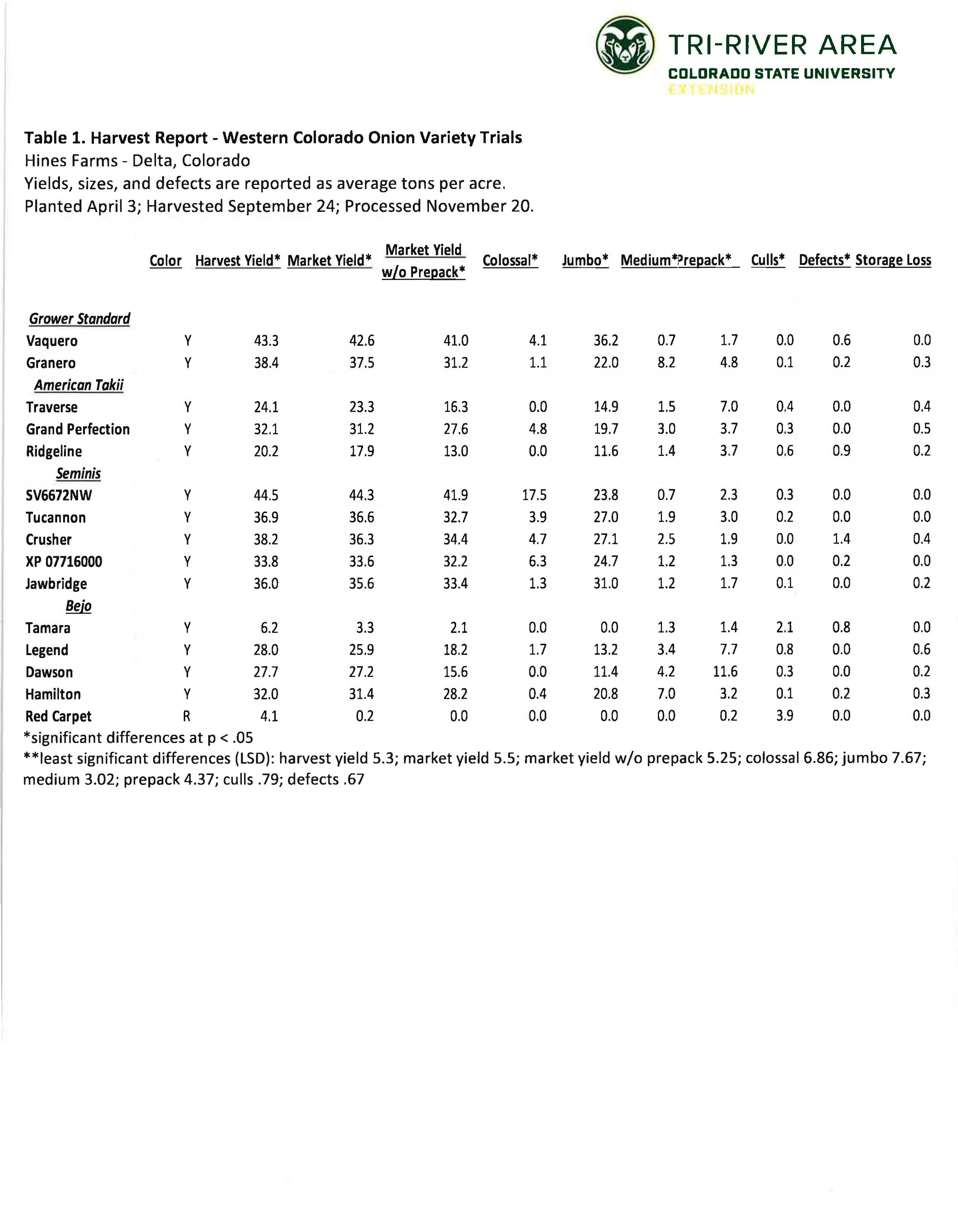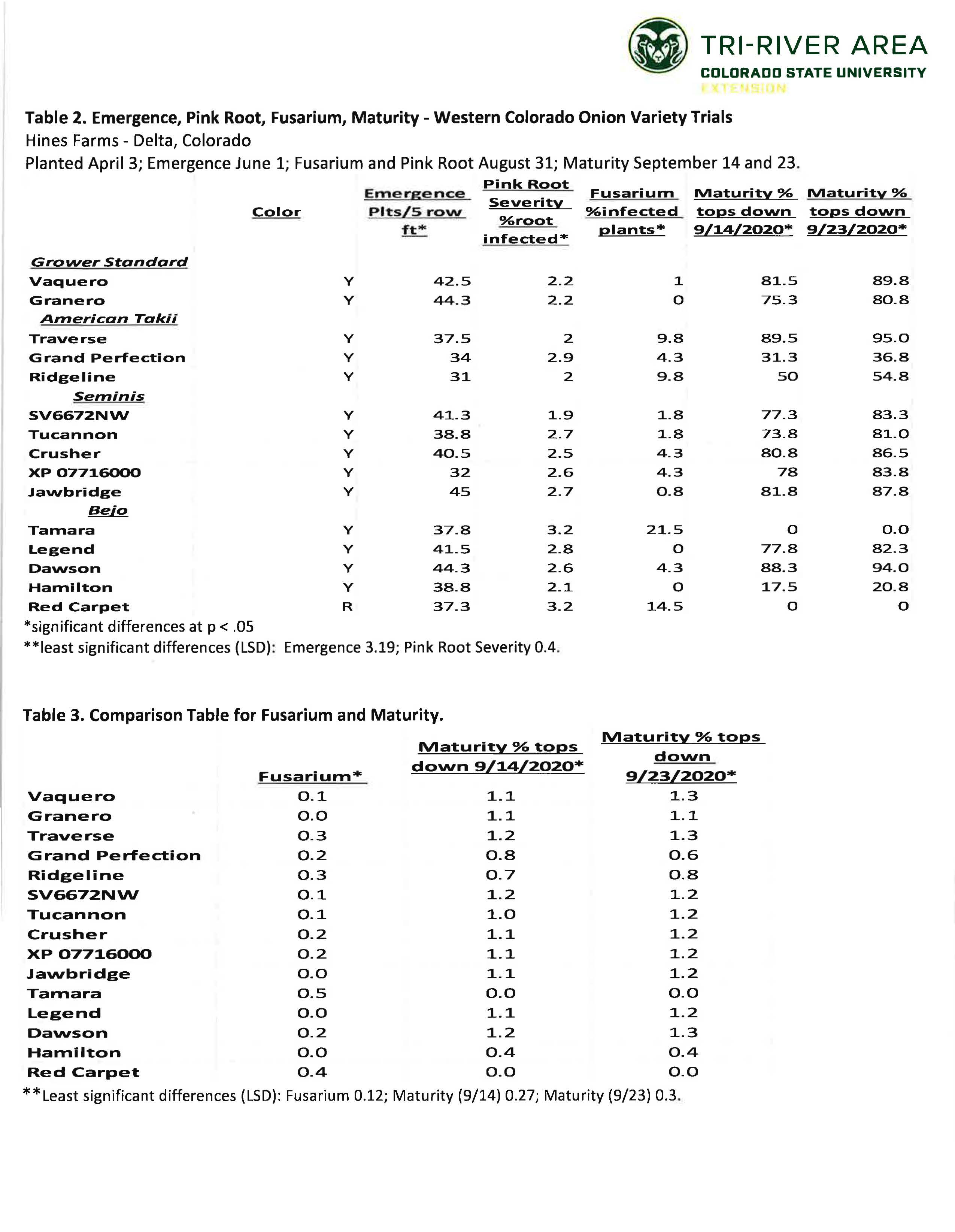Our friends at Colorado State University’s Extension in Delta recently sent us the results from the 2020 Western Colorado Variety Trial. Seth Urbanowitz, CSU Regional Extension Agronomist, told us three companies participated in 2020.
“Yields were excellent, and there were significant differences in all evaluated criteria, other than storage loss,” Seth said. “There was one red variety that was left out of statistical analyses in an effort to not skew results.”
In his Jan. 13 email, Seth wrote that the 2020 Western Colorado Onion Variety Trial was a success; the growing season was sufficient to produce high quality onions, and yields were excellent.
“Planting occurred on April 3,” Seth said. “Emergence was evaluated on June 1, when onions were at the 3-4 leaf stage. On Aug. 31 fusarium and pink root were evaluated. Maturity was evaluated on Sept. 14 and 23, and onions were harvested Sept. 24 and sorted on Nov. 20.”
The report continued, “Analysis of Variance (ANOVA) was performed on all evaluation data to test for significant (p < .05) differences among varieties. A least significant difference (LSD) test was performed to allow for comparison of how averages differed. If, for a particular evaluation, the average is greater than the LSD, then we can be 95 percent confident that the variety performed better for that characteristic.
“For example, the market yield (LSD 5.5) of Granero (37.5 t/a) was significantly higher than that of Hamilton (31.2 t/a). However, the market yield of Tucannon (36.6 t/a) was not significantly higher than Hamilton (31.2 t/a).”
It went on to say, “For the Harvest Report (Table 1), there were significant differences in harvest yield, market yield, market yield w/o prepack, colossal, jumbo, medium, prepack, culls, and defects. Table 2 reports averages for emergence, pink root severity, fusarium, and maturity. There were statistically significant (p < .05) differences for all of those evaluations.
“Fusarium was reported as percent of infected plants, and maturity was reported as percent of tops down. However, due to fusarium and maturity being expressed as percentages it was more accurate to transform the numbers to conform better to statistical parameters. Table 3 allows for more accurate comparison of varieties in terms of fusarium resistance and maturity. Pink root ratings are reported numerically, where 1=1%; 2=2-10%; 3=11-25%; 4=26-50%; and 5=>50% of root area infected,” the report said.
Seth also said, “Thank you to Brent Hines and Hines Farms for allowing this research to take place. Thank you to American Takii, Bejo and Seminis for their generous contributions.” The variety seeds from American Takii were Traverse, Grand Perfection and Ridge Line. From
Seminis came SV6672NW, Tucannon Crusher, XP 07716000 and Jawbridge. Bejo varieties were Tamara, Legend, Dawson, Hamilton, and Red Carpet.
Download the report here.




